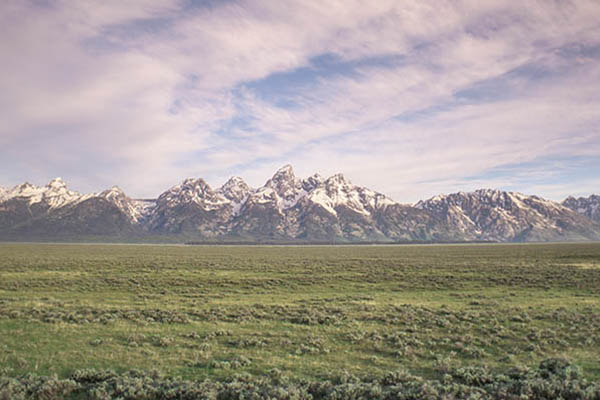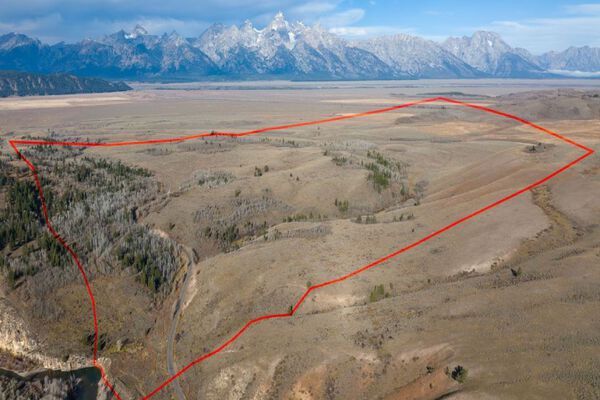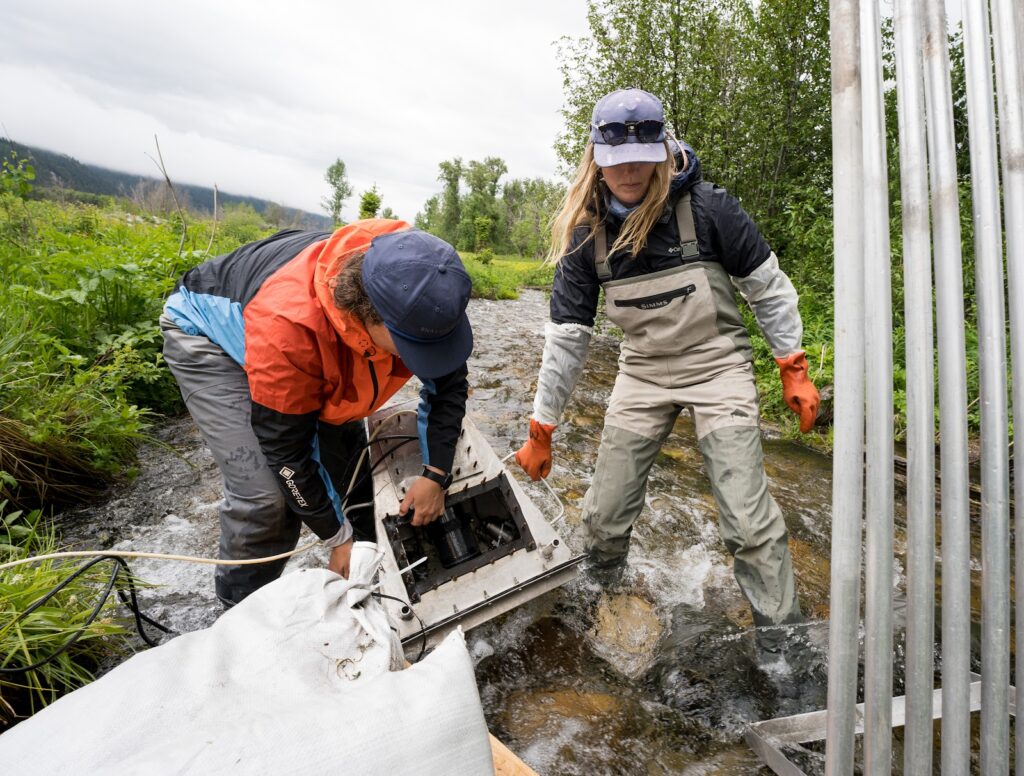
THE SNAKE RIVER FINE SPOTTED CUTTHROAT TROUT IS CAUGHT ON CAMERA IN IT’S NATAL STREAM IN GRAND TETON NATIONAL PARK.
Park fisheries staff meet at one of the gear caches to load up on all of the supplies needed to set up an underwater camera. They grab their waders, bear spray, a trail camera, and any extra hardware for the camera rig. The crew also gather some extra pickets for the fish weir that has already been setup at the upper Bar-B-C Ranch spring, where Snake River fine-spotted cutthroat trout spawn throughout the spring and early summer. Fish weirs have been historically used by humans to trap fish for over 8,000 years, but the weir at upper Bar-B-C spring is meant to direct fish to a camera box for data collection purposes. Described as “the most challenging part of the process” by fisheries crew lead Martha Maciasz, she and her team setup the weir by weighing down aluminum frames partially across the stream with fifty-pound sandbags.

Once the framing is set, the crew then create an impenetrable fish fence by staking in the pickets all along the frame. Needing two people just to carry it, they plant the underwater camera system with its custom metal chassis into the stream. Their goal is to position it at the end of the fish weir, where all of the trout moving upstream to their spawning grounds will be forced to move through. The camera rig is weighed down with heavy sandbags and river rocks.

While half the crew are planting the camera, the other half are setting up the electronics to get the camera running and calibrated. The entire video setup is powered by a micro off-grid solar system that is staged next to the stream for easy access.
This is not the fish crew’s first underwater camera rodeo: Within a matter of two hours, they have the camera up and running, fully calibrated to accurately detect the moving trout, and are setting up the last bit of tech to finish the process, a trail camera faced at the weir.

Predation of trout at the weir has occurred in the past, so the fisheries crew install a trail camera to try and capture any of those occurrences. This will help them know what (or who) has been preying on the trout or disturbing the area.
While the Snake River fine-spotted cutthroat trout is doing better than other types of Rocky Mountain cutthroat trout, they have still been impacted by a variety of issues. Ranging from habitat loss due to agriculture, logging, and dams, to the introduction of non-native fish species (like rainbow and brown trout) all competing for invaluable food resources. Collecting data through the use of the video weir will help the park gain insight into the health of the native cutthroat fishery over time. The weir and underwater camera rig used to collect this data are funded by the Grand Teton National Park Foundation in their joint initiative with the park to restore and conserve native fish habitat.










